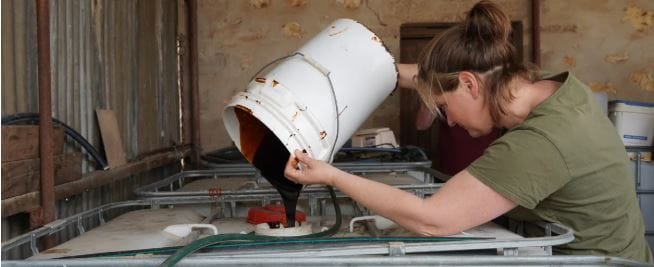How to make the most of biofertilisers

BIOFERTILISERS are products that can improve plant health and stimulate growth. They also improve the health of the soil. There are several different products that have different beneficial actions and may be in solid or liquid form.
Inoculants are products containing living microbes that benefit the crop-soil system in some way. A good example is the rhizobia bacteria, applied to legumes to facilitate nitrogen fixing. Compost teas and extracts are inoculants that contain a diverse array of microbes which are beneficial to the soil.
Biostimulants are products without any nutrient value, but they contain hormones and plant growth stimulants. Biostimulants help to minimise abiotic and biotic crop stress. Products include liquid seaweed, humic and fulvic acid, and others.
Biofertilisers contain macro and micronutrients essential for plant growth. Nutrients are attached to a carbon source that makes them more stable. These products are better for the soil and will have no effect on soil biology when used correctly. Biofertilisers are often fermented, using microbes and carbohydrates to turn complex nutrients into biological forms. This makes them easier for plants to take up. These products are applied to the soil where the nutrients they contain are more soluble and are unrequired to be broken down by soil microbes before plants can access them.
Making biofertilisers
There are three main methods for making biological products:
- Aerobic cultures made with the use of oxygen
- Fermentation cultures that use very little, to no oxygen
- Vermi products that have been through the gut of a worm, (worm teas or vermi cast).
Anaerobic fermentation uses little, or no oxygen, and beneficial bacteria to create a biofertiliser product that supplies readily accessible nutrients for plants, as well as supporting beneficial biology in the soil. The bacteria within the fermenting brew can survive in low, or high-oxygen environments. During the fermentation process, many different compounds known as fermentative byproducts can be produced. In a balanced and controlled ferment, the beneficial byproducts formed are vitamins, enzymes, amino acids and organic acids, creating a bio-stimulant that is good for plant and soil health.
Badly managed ferments may lead to gasses and alcohol products being formed that can be toxic to plants and soil.
Benefits of biofertilisers
Biofertilisers can be used in conjunction with conventional agricultural practices, or can form part of a more holistic approach to maintaining soil health and microbiology while increasing plant growth. Using biofertilisers may result in plants being able to cope better with environmental stresses, as well as improved uptake of nutrients and stimulating root growth. Biofertilisers have a good shelf life of six-to-12 months if sealed tightly in a container, but should be checked regularly.
If you want to learn more about making biofertilisers on farm, a series of informative videos can be viewed by visiting the website (www.landscape.sa.gov.au/mr/land-and-farming/soils/bio-fertilisers).





